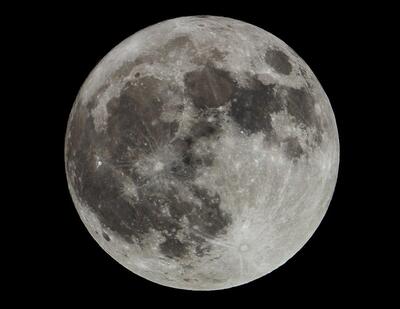Looking to take your stargazing to the next level? Choosing the right telescope is vital to capturing the beauty of the night sky. Here, I dive into the differences between apochromatic and achromatic telescope lenses and provide the information so you can choose the right one for your astronomical pursuits.
Apochromatic is designed to reduce chromatic aberrations in the red, blue, and green color spectrum. Achromatic reduces only red and blue. Therefore, apochromatic is considered better but also the more costly of the two.
As stated, apochromatic lenses are typically considered to be better than achromatic lenses due to their superior color correction and reduced chromatic aberrations. This is because telescopes are often used to observe objects in space, where accurate color reproduction can be necessary for scientific purposes.
Let’s break it down a little more than that, though, shall we?
Why Are Colors Important In Your Telescope View?
Colors are important in a telescope view because they provide essential information about the observed objects. Different shades of light are emitted by various chemical elements. They can reveal important details about celestial objects’ temperature, composition, and physical properties.
For example, the color of a star can reveal its temperature, with blue-tinted stars being the hottest and red-tinted stars being the coolest. The color of a planet’s atmosphere can also provide important information about its composition and the presence of atmospheric gases, such as oxygen and methane.
In addition, the ability to observe and capture accurate colors is critical for scientific purposes, such as studying the evolution of stars, the formation of planetary systems, and the structure of galaxies. Precise color reproduction is also important for artistic purposes, such as capturing the beauty and wonder of the night sky.
Also, Red Shift, a color leaning toward red, may mean it is moving away from you, while a blue tinge can indicate it is heading toward you.
The Color Red In Space & Astronomy, What it means
In astronomy, objects that show red in color often indicate low temperatures and low energy emission levels.
Red light has a longer wavelength and lower energy than blue or green light. Hence, objects that emit mostly red light are typically cooler. For example, many cool red giants and red supergiants are characterized by their red color due to the emission of light from hydrogen and helium in their atmospheres.
Red also indicates the presence of certain elements, such as iron and magnesium, in the atmospheres of stars and nebulae. These elements can emit red light when they are excited by high-energy radiation or by the heat of a nearby star.
In addition, some objects, such as galaxies and nebulae, show a reddish hue due to the presence of dust that absorbs blue and green light and scatters red light. This is known as “extinction.”
The Color Blue’s Meaning In Astronomy
In astronomy, objects that appear blue often indicate high temperatures and high energy emission levels.
Blue light has a shorter wavelength and higher energy compared to red or green light, so objects that emit primarily blue light are typically hot. For example, many blue stars are hot, massive stars characterized by their blue color due to the emission of light from helium and other elements in their atmospheres.
Blue can also indicate the presence of certain elements, such as oxygen, in the atmospheres of stars and nebulae. These elements can emit blue light when they are excited by high-energy radiation or by the heat of a nearby star.
In addition, some objects, such as certain types of nebulae, appear blue due to the presence of dust that scatters blue light more effectively than other colors.

Finally, Green and What Presence It Might Indicate For An Astronomic View
In astronomy, green light is typically associated with the presence of oxygen.
Green light is emitted by excited oxygen atoms, which can occur in certain types of nebulae and in the atmospheres of some stars. Green light is produced when high-energy radiation or heat excites the oxygen atoms, causing them to emit light at a specific wavelength.
In addition, green light can also be produced by the interaction of light with certain elements, such as iron, in the atmospheres of stars and in nebulae.
In conclusion, the presence of green light in an astronomical view often indicates the presence of oxygen. Therefore, it can be a valuable tool for astronomers to understand celestial objects’ composition and physical properties of celestial objects.
Now that we know why seeing red, blue, and green may be necessary, let’s see if we can understand why it may be required for you, the amateur astronomer.
STOP, And Think About This And Colors For A Moment
We have a lot of reasons why we want to see exact colors in space, but I am not NASA. Do I need all that?
Think about this once. The exact number of colors that can be created with red, blue, and green light depends on the specific technologies being used, as well as the image’s bit depth and color depth.
In a typical 8-bit RGB color model, each primary color (red, green, and blue) can be represented by 256 levels of intensity, allowing for a total of 256 x 256 x 256 = 16,777,216 possible colors. This number can increase even further with higher binary and color depths. (this is so 90’s)
Yes, most modern computer monitors can show over 1 Billion colors. But unfortunately, our human brain can only distinguish some of the differences. Although I think Sherman Williams may have tried to name them all?
It is difficult to provide a specific number of colors that can be created with red, blue, and green light; the number is definitely in the millions and can be increased with higher bit depths and color depths.
What Does ApoChromatic Actually Mean When Associated With A Telescope
Apochromatic telescopes use specialized lenses called apochromatic refractors, designed to correct for chromatic aberrations in three light colors (red, blue, and green). These lenses produce images with minimal color fringing and create sharp, high-contrast details.
What Does Achromatic Mean Actually Mean On My Telescope
On the other hand, achromatic telescopes use lenses designed to correct for chromatic aberrations in two colors of light (typically red and blue). While these lenses are less expensive and still provide good image quality, they can produce noticeable chromatic aberrations, especially when observing brighter objects like stars.
Which Lens Are Actually The Best For My Need
For telescopes, apochromatic lenses are generally better because they provide superior color correction and reduce chromatic aberrations resulting in sharper, higher-contrast images. However, the choice between an apochromatic and achromatic telescope will depend on the specific needs and budget of the observer.
Typical cost Ranges of Each Apochromatic and Achromatic
Achromatic telescopes can range in cost from a few hundred dollars for a small beginner’s telescope to several thousand dollars for a high-end, large-aperture achromatic refractor.
Apochromatic telescopes, on the other hand, tend to be more expensive due to the specialized lenses and advanced optical design. For example, a small apochromatic refractor can cost several thousand dollars. In contrast, a high-end, large-aperture apochromatic telescope can cost tens of thousands of dollars.
It’s important to note that the cost of a telescope is just one factor to consider when choosing the right telescope for your needs. Although it usually is the main one.
For other factors, such as the size and portability of the telescope, Check out How Much Telescopes Weigh. The quality of the mount and the ease of use See Which Telescope is Easiest To Use?. All these can play a role in determining the best telescope for you.
What about telescope weight? Check out this comparative guide to telescope weights.
Do You Need Apochromatic if you are color blind?
Color blindness affects a small portion of the population and can vary in severity. According to estimates, approximately 1 in 12 men and 1 in 200 women have some form of color vision deficiency.
The most common form of color blindness is red-green color blindness, which affects approximately 8% of men of Northern European descent. This type of color blindness makes it difficult to distinguish between red and green hues and can range from mild to severe.
Blue-yellow color blindness is less common and affects approximately 0.5% of men and 0.1% of women. This type of color blindness makes it difficult to distinguish between blue and yellow hues.
It is estimated that approximately 8% of men of Northern European descent have red-green color blindness. In contrast, blue-yellow color blindness affects a smaller portion of the population. However, it is essential to note that these are rough estimates. The prevalence of color blindness can vary depending on the people and region being studied.
I think you do not need these more expensive lenses until you get into astronomy deeper or want to get into astrophotography. Although these are distortions in color and, in my opinion, can mess with the shading of gray or brown, you may also visibly see.

What about corrective wear in general? Check out this article Can I Use Glasses or Other Corrective Wear Using a Telescope
Astrophotography, Which Lens Would Be Best
For astrophotography, apochromatic refracting telescopes are considered the best lens type due to their superior color correction and reduced chromatic aberrations. In addition, these lenses are designed to correct for chromatic aberrations in three colors of light (red, blue, and green), which is essential for capturing accurate images of celestial objects.
In addition to apochromatic refracting telescopes, other lenses can be used for astrophotography, including reflector and catadioptric telescopes. Reflector telescopes use mirrors to collect and focus light and can be a good choice for deep-sky photography. Catadioptric telescopes use a combination of mirrors and lenses to correct for chromatic aberrations and produce sharp, high-contrast images.
Ultimately, the lens choice for astrophotography will depend on the specific needs and budget of the photographer. It is crucial to consider factors such as aperture size, focal length, and portability when deciding.
Conclusion
In conclusion, apochromatic lenses are generally considered to be better for telescopes because they provide superior color correction and reduced chromatic aberrations, resulting in sharper, higher-contrast images. However, the choice between an apochromatic and achromatic telescope will depend on the specific needs and budget of the observer. Look below for related articles that may benefit you.


